It is the last month of Heisei 31.
In this memorable month of April, our stainless steel panel design using our composite polishing technology was published in two newspapers representing architecture.
April issue of Shinkenchiku (April 1, 1991)
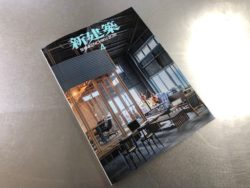
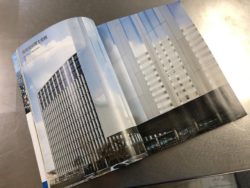
Nikkei Architecture (April 11, 2019)
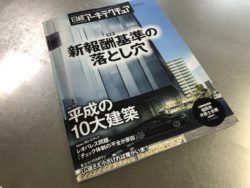
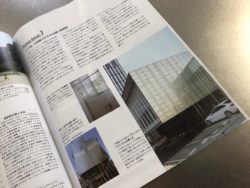
In this article, there is a description of “vertical stripes of Hakata Kenjo pattern formed by heterogeneous texture”.
I would like to explain about this heterogeneous texture.
First of all, the polished design of the wall looks like this.
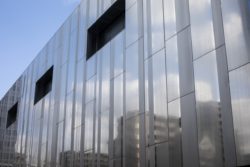
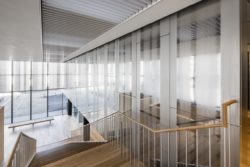
If you zoom in

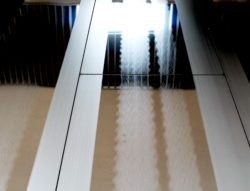
This is the atmosphere.
The structure that shines like a mirror surface is the buffed finish.
The shimmering finish is the “Fluctuating Finish”.
The finish with white lines is called “String Curtain Cloud”.
First, buffing.
Strictly speaking, the finish is called gloss buffing.

This finish is used for semiconductor manufacturing equipment, transportation equipment, etc. It has better reflectivity and resolution than general-purpose buffs, but it is different from commonly used architectural mirror materials.
The major difference is that the mirror surface used for architecture generally has no streaks or only thin streaks, but this glossy buff has a reasonably good reflection but vertical lines.
The concept of this project is “Hakata Kenjo Pattern”, which is a vertical stripe pattern, so we adopted this product because it matches the concept.
In addition, since the material is to be used for an outdoor wall, the reflection of the material is reduced to about half of that of ordinary architectural mirror materials in order to prevent reflection pollution.
Buffing is not commonly used for architectural purposes, but it is often used in kitchens and ducts.
However, it is often used in kitchens and ducts. It is a finish that people hesitate to use for outdoor or indoor mainstream finishes like this one.
The reason is that its strong buff line often detracts from the rest of the design.
The reason why we were able to use it this time was because of the Hakata Kenjo Pattern vertical stripe concept, which encouraged us to use the design.
Next is the “YURAGI wave motion finish.
 This is a finish in which various shimmering patterns with different amplitude and heterogeneity overlap each other, giving the appearance of three-dimensionality and depth.
This is a finish in which various shimmering patterns with different amplitude and heterogeneity overlap each other, giving the appearance of three-dimensionality and depth.
In order to avoid the repetition of the same patterns and impressions as in illustrations, printing, and transcriptions, a design polishing machine has been specially developed to draw the same trajectory each time, but not to form exactly the same reflections, shine, and polishing lines. By using this finish, it is possible to create lines that reflect the original metallic luster and reflection of the metal and give an independent impression, rather than a monotonous print or illustration.
The standard product “Fluctuation” is used in this exterior wall as a reproduction of the “diamond-shaped pattern” that appears in the vertical stripes. Vertical stripes” when seen from afar and “diamond-shaped” when seen from up close. In order to realize the architect’s image, the amplitude of the contrast was specially adjusted, and the perspective texture was adjusted.
Finally, there is the String Curtain Cloud. As the name implies, the String Curtain is a polishing line that forms a motif of a curtain of thread.
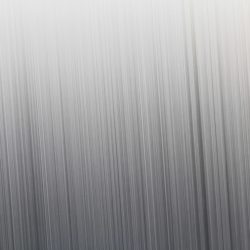
Each strand looks like a hairline, but in fact, if you look closely, you can see that the lines are woven together.
This weaved texture improves visibility from a distance and creates a texture that expresses vertical stripes well.
However, in order to adjust the contrast between the buffed and fluctuating areas and to express the white lines of Hakata’s dedication pattern, the lines had to be whiter and less reflective than standard.
This braided line is based on the same concept as the fluctuation, which is heterogeneous and the trajectory of the abrasive grains changes each time, and the device structure is constructed in such a way that it does not form a homogeneous texture like illustrations or printing.
In this way, unlike mirrored materials generally used in architecture, we use buffing with “fuzzy” lines as a base, and pay homage to the Hakata dedication pattern with two types of heterogeneous polishing marks.
The core of this work is the architect’s idea of expressing the Hakata dedication pattern in a different way from perspective to perspective by emphasizing the original texture and luster of the metal, not the texture as in illustrations or printing.
Incidentally, a method of polishing that is homogenous, uniform, and always has the same expression is a method that uses masking and molds.
This method is very suitable for expressing a homogenous space with metallic luster, and is often used in public facilities.
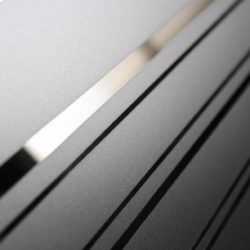
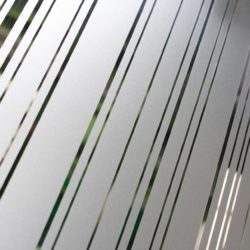
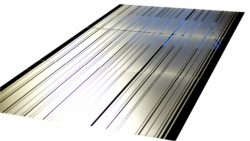
The method of expression differs depending on the philosophy of the architect or designer and the space to be formed.
What do you think about homogeneous and heterogeneous expressions?
The expression of metal is infinite.
Why don’t you incorporate metal expression into your creative space?
Click here to visit the Inspiration and Imagination site.
